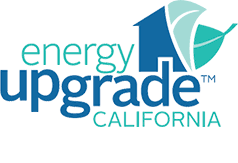THE GOOD NEWS: The rebate now has a higher maximum amount, part of which is a direct result of actual energy savings. The potential rebate now ranges from $1000-$6500, whereas previously it was capped at $4500.
We use energy modeling software to predict energy savings based on which upgrades are applied to a home. Before the changes to the rebate program, the rebate amount was purely based off the software’s prediction of energy savings. Now it is based off a reduced version of those same savings, plus bonuses called “kickers.” These add to the total rebate amount at $2.00 for every modeled gas therm and $0.75 for every kWh saved annually. In most cases, homeowners are seeing much higher rebates with the new calculations. Those who take a whole-house approach to energy savings, and have larger scopes of work done (HVAC, ducts, attic insulation, air sealing, etc) are generally seeing between $4000-$6500.
 THE BAD NEWS: There is a new rebate policy on “fuel switching” for the heating of a home (or water heating).
THE BAD NEWS: There is a new rebate policy on “fuel switching” for the heating of a home (or water heating).Those with existing gas heating, or gas water heating, can no longer get the part of the rebate that was associated with upgrading those gas units to electric heat pump units. This is a very unfortunate policy change, and a big step backwards for the industry. It comes at a time when California homeowners are starting to be more aware of the importance of energy efficiency, and are looking into technologies of the future, such as electric heat pumps (image left). A few brave souls are even trying to convert their homes into ZNE (zero net energy) homes, which requires going all electric. Those homeowners will not be able to receive as large a rebate as they could previously.
However, the bulk of the rebate usually comes from the nitty gritty stuff (that is, duct work, air sealing, attic insulation, etc), which is step 1 for any efficient home, ZNE or not. So any homeowner looking to upgrade can still receive a sizable rebate, and maybe a bigger one than before.
And this is not to say people should shy away from heat pumps. If sized and designed correctly, they are a far more efficient form of forced air home heating than a gas furnace and they will still be the way we are headed in the future. One doesn’t only get a heat pump installed because they are having solar put in later, they are great on their own in many situations.
CONCLUSION: The loss of the fuel switching rebate is unfortunate, but the kicker boost should make up for it. Keep in mind that switching to an electric heat pump is a good investment, with or without the rebate.
[dropshadowbox align=”none” effect=”lifted-both” width=”640px” height=”” background_color=”#ffffff” border_width=”1″ border_color=”#dddddd” ]At EPB we like to take poorly performing homes, test them to figure out how to improve things, then perform a deep energy retrofit. If you’re interested in improving your home’s performance, efficiency, durability, air quality and comfort, call (925) 363-4498 or e-mail info@epbuilders.com to speak to a technician, or schedule an energy audit.[/dropshadowbox]


Speak Your Mind